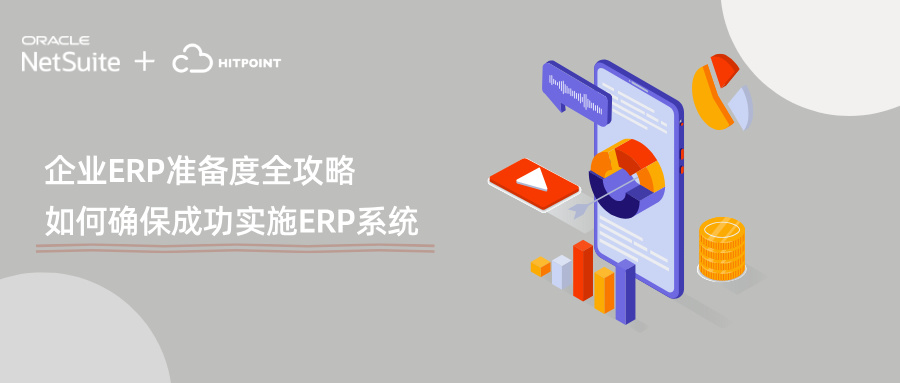In today's digital age, Enterprise Resource Planning (ERP) systems have become a key tool for businesses to enhance operational efficiency and achieve digital transformation. However, implementing an ERP system is not something that can be accomplished overnight. Companies need to conduct a comprehensive readiness assessment to ensure the successful deployment and effective utilization of the ERP system.
What is ERP Readiness?
ERP readiness assessment is a process that measures whether a company has the necessary conditions and capabilities to implement an ERP system. It covers not only technical, financial, and data management evaluations but also involves assessing corporate culture and employees' adaptability to change. Since ERP systems can significantly alter the way a business operates, readiness assessment is crucial for the successful implementation of ERP.
Core Objectives of ERP Readiness Assessment:
1. Identify Process Improvements: Clarify issues in current business processes and set goals for after the ERP implementation.
2. Analyze Technical Requirements: Assess the hardware, software, and infrastructure requirements of the ERP system.
3. Evaluate Data Management Capabilities: Ensure existing data management practices can support the ERP system.
4. Develop a Change Management Plan: Assess the team's adaptability to process and cultural changes.
5. Describe Resource Requirements: Specify the resources needed for the implementation, maintenance, and expansion of the ERP system.
6. Assess Risks: Identify risks associated with ERP implementation and weigh them against alternative solutions.
7. Calculate Return on Investment (ROI): Evaluate the long-term benefits and costs of the ERP system.
The Importance of ERP Readiness
ERP systems can significantly enhance a company's operational efficiency and profitability, provided the company is well-prepared. ERP implementation involves not only technological changes but also profound changes in workflows, organizational structure, and culture. If a company is not ready, it may face the following issues:
- Implementation Delays: Due to a lack of clear goals and plans, ERP implementation may be delayed.
- Cost Overruns: Insufficient technological infrastructure or poor data management can lead to additional costs.
- Employee Resistance: If employees are uneasy about the changes, they may resist using the ERP system.
- System Failure: If a company is not ready, the ERP system may fail to deliver the expected benefits.
Through ERP readiness assessment, companies can identify potential issues in advance and develop corresponding solutions to increase the success rate of ERP implementation.
Key Elements of ERP Readiness Assessment
1. Strategy: ERP implementation requires clear, measurable goals that are closely aligned with the company's overall strategy. The readiness assessment should first establish a framework for ERP implementation to ensure alignment with corporate strategy. For example, if the corporate strategy emphasizes customer service, the ERP system's goals should include automating processes to enhance customer satisfaction.
2. Structure: ERP systems can help companies improve operational discipline, but the company must have an organizational structure to support these changes. The readiness assessment should evaluate whether the existing organizational structure is consistent with the ERP system's requirements, including centralized decision-making, specialized resources, and standardized processes.
3. Systems: Whether the technological infrastructure can support ERP implementation is a key part of the readiness assessment. ERP systems can be cloud-based or on-premises, and companies need to assess whether existing technology can support the ERP system's operation, including hardware, software, and data migration.
4. Style: ERP implementation can lead to significant changes in corporate culture and management style. The readiness assessment should evaluate whether corporate leaders are prepared for such changes, for example, shifting from centralized decision-making to a more decentralized model.
5. Staff: Employees' adaptability is key to the successful implementation of ERP. The readiness assessment should evaluate employees' acceptance of change, including flexibility, educational and training needs, and project management capabilities.
6. Skills: ERP implementation requires a team with specific skills, including IT skills and user skills. The readiness assessment should evaluate whether the company has these skills or whether external support is needed.
7. Shared Values: Shared values refer to the consensus within the company on the importance of ERP implementation. The readiness assessment should ensure that all stakeholders have a clear understanding of the goals and impact of ERP implementation to reduce resistance to the project.
Implementation Steps of ERP Readiness Assessment
1. Discovery and Planning: Collect business requirements from various departments and clarify the goals and scope of ERP implementation.
2. Design: Analyze existing workflows, determine software customization needs, and begin data migration.
3. Development: Configure business requirements into the ERP system and continue data migration.
4. Testing: Gather user feedback, optimize system configuration, and ensure the system meets business requirements.
5. Deployment: Officially launch the ERP system and provide necessary training and support.
6. Support: Resolve issues that arise during implementation and perform system upgrades to ensure continuous optimization.
Rapid Implementation of Oracle NetSuite ERP
Oracle NetSuite ERP is a cloud-based solution that offers integrated modules for finance, inventory, order management, human resources, professional services automation, omnichannel commerce, and advanced analytics. Oracle NetSuite's SuiteSuccess customer engagement model reduces implementation time and costs through leading business process practices, accelerating value realization.
-
Digital Transformation Guide
2025/04/16【Cloud Goods Sharing】Revenue Management: The Intelligent Engine of Business Profitability
-
NetSuite News
2025/04/10Oracle NetSuite Version 2025.1 Professional Analysis: What are the Important Changes Brought by this Update?
-
Digital Transformation Guide
2025/04/02【Cloud Goods Sharing】 Accounts Receivable and Accounts Payable: The Balancing Act in Corporate Finance
-
Digital Transformation Guide
2025/03/26【Cloud Goods Sharing】 Serialised Inventory Tracking: How to Improve Operational Efficiency and Accuracy















